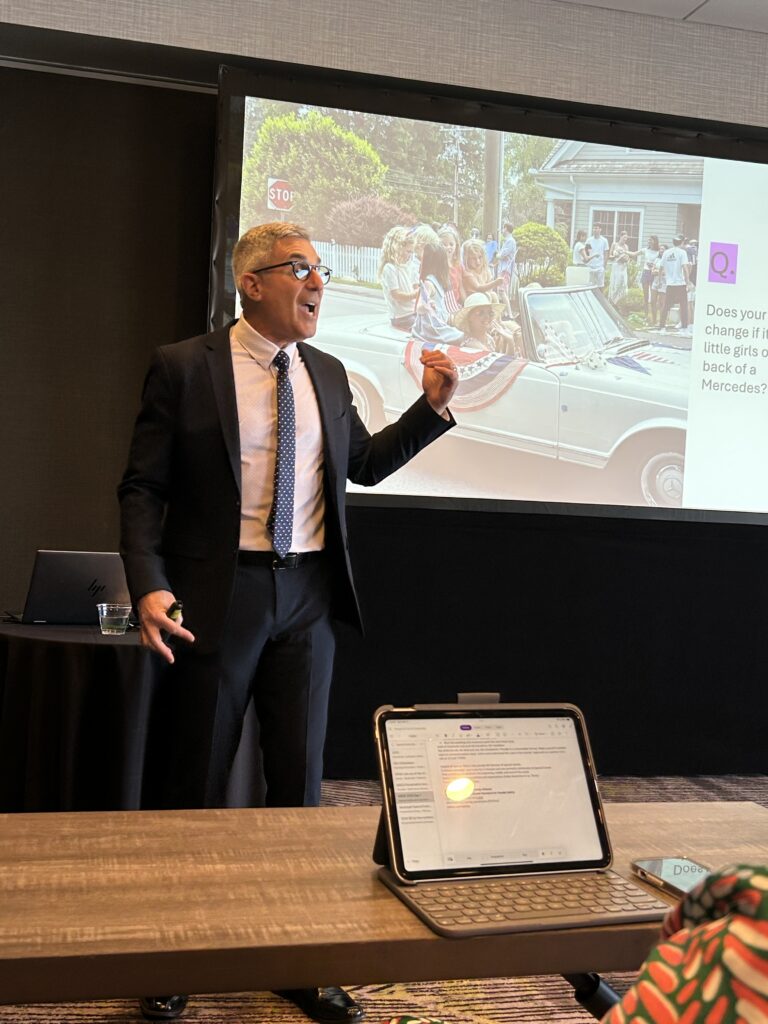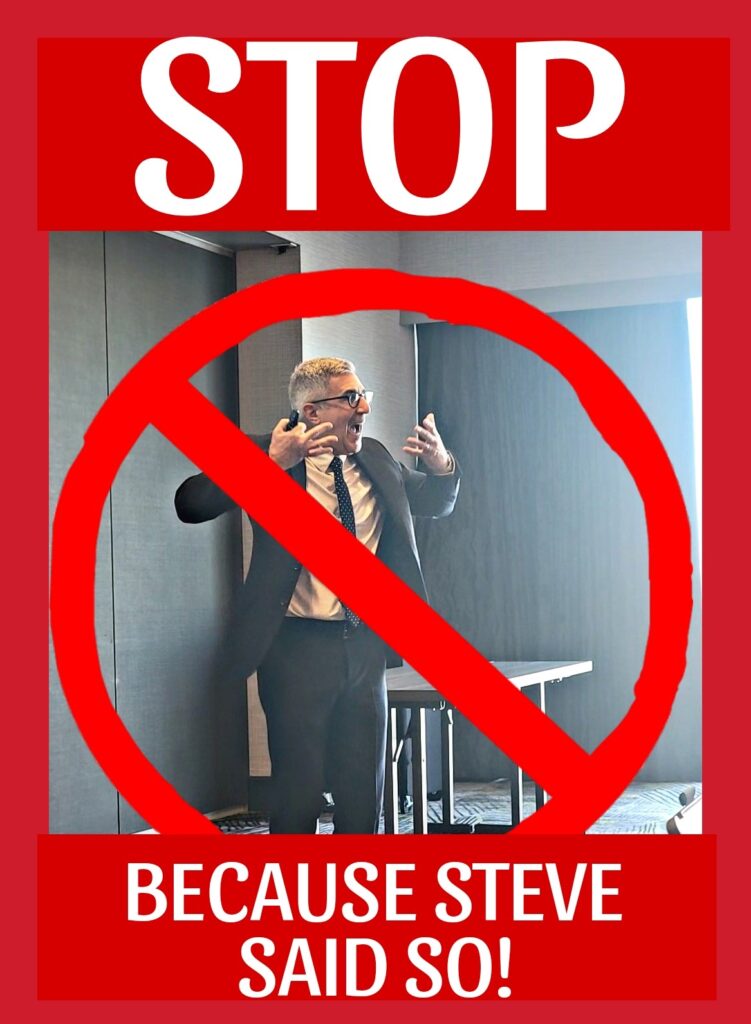I recently presented two sessions about parade safety at the Municipal Special Events Summit in Savannah, Georgia. The city is interesting, the conference was organized, and my presentations went well. Attendees even hung out afterwards to discuss events in their communities, which is gratifying.

Later that evening, there was a social gathering at a local restaurant. I didn’t come to the conference with anyone, so I was relieved when people invited me to sit with them. Everyone assumes the presenter has someplace to be, but when it’s not my conference I usually don’t. This led to a conversation about the persona we want people to see.
I said I project confidence when I’m talking about something I’m knowledgeable and passionate about, but when I enter a room where I don’t know people, I’m quiet until I feel comfortable. Our work on events overwhelmingly confirms that we assume specific personas for different situations.
People who get crazy at night also hold day jobs, where I assume they act differently. Crowds enjoying an event will race for the exits if they think there is a shooter, as happened outside Barclays Center in New York after a boxing match and at Rolling Loud Miami festival, for example. Certain artists and genres of entertainment have been accused of instigating crowd violence as part of their act, such as rappers Tyler, the Creator and Migos and death metal band Cannibal Corpse. English soccer turned ordinary fans in the 1980s into drunk hooligans, as described in Bill Buford’s Among the Thugs (1990) and Nick Hornby’s Fever Pitch (1992). More recently, seemingly ordinary Americans were whipped into a violent mob trying to stop a peaceful transition of government.

If people were only one thing, crowds would be much easier to manage. When I was speaking about parade safety, I showed this picture. I assume the adults in front weren’t usually dangerous risk-takers, but on this day they let five young girls perch on the back of their convertible with nothing to hold. I cannot decide if the bigger problem was those people or the parade organizer who failed to protect the children from falling out of an open vehicle. Everyone seemed blind to even obvious hazards.
If event professionals acknowledge that attendees calculate risk differently at parades, concerts, sports, and other events than they do in their private lives, then we have strong motivation to inspect event sites and structures, create safety plans, train supervisors to activate those plans, teach staff to do their part, and empower public safety to provide meaningful support and oversight.
That’s what I was talking about in Savannah. Nominally, I was promoting a future American National Standard for Parade Safety, to be listed as ANSI ES 1.42-2025 on the ESTA Technical Standards Program page, hopefully by late April or early May 2025. At the conference, I showed attendees parade photos and asked variations on the key risk management question, “What could go wrong?”
My goal was to sensitize attendees to situations they often see but rarely process as risks they can mitigate. As a preview of the ANSI standard, we discussed visibility of marshals and sight lines of marchers, bollards and other means of stopping vehicle intrusions, the importance of separating people from moving vehicles, as well as securing people inside parade units. I got the group to do my “Yes, Steve” and “No, Steve” call and response, which is fun because everyone enjoys the joke together.
One especially creative attendee heard what I thought was only my inner monologue and created this image during my presentation. I did not realize I so clearly implied what every lawyer thinks all the time. I felt so seen!

Parade Safety will complete my trilogy of American National Standards. First was ANSI ES 1.9-2020, Crowd Management. Then came its companion, ANSI ES 1.40-2023, Event Security. As we wrote that standard, I worked on a case in which a child was killed by a parade vehicle. Parades seem innocent, but they spread crowds over a long route with virtually no security perimeter, many organizers run only a few parades a year, and there is currently no authoritative safety guidance. So I organized one more task group, gathered more smart friends to add knowledge and experience, and wrote.
Now that the document is complete, the next task is to put it in the hands of people who will use it. The Municipal Special Events Association was a great start, as its members are the local officials who review event permits and can condition approval on compliance with national standards.
Next, I will write articles for several event industry publications. I will deliver more presentations at which I hope to reach public safety officials and parade and festival organizers. In a field as diffuse as parades, it is necessary to flood the zone.
This is one reason there have been no Adelman on Venues for a while. Creating authoritative guidance is a lot of work, and getting it published is just the beginning. You, gentle reader, are a force multiplier. For now, talk up the new guidance, and share it with your colleagues when it’s published. Safety standards should be free for everyone, don’t you agree?
This is when, if we were in a presentation together, you would say, from the diaphragm, with feeling, “Yes Steve!”
